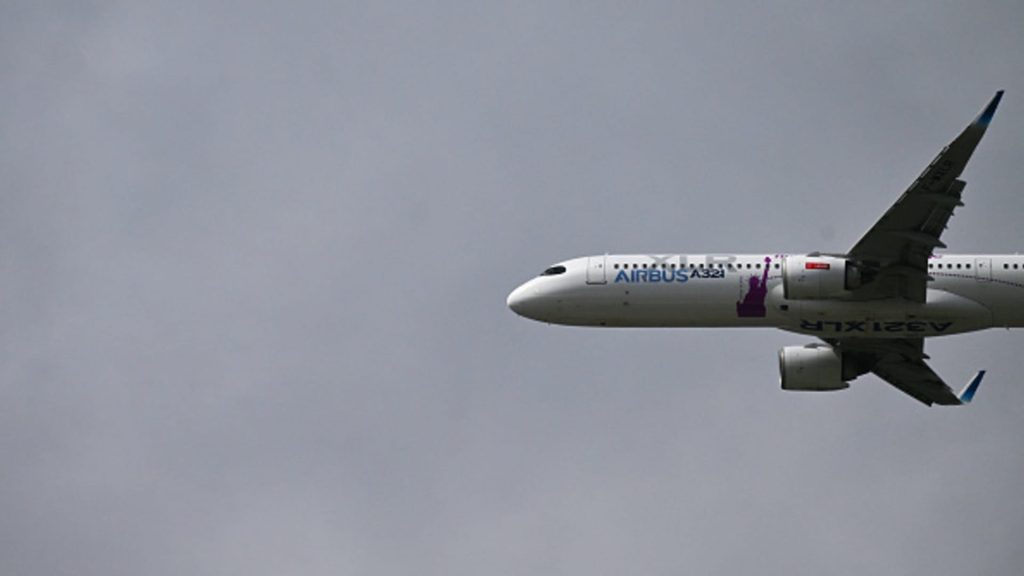FARNBOROUGH, England – The Farnborough Air Show generated deals worth £39.3 billion ($50.8 billion) across its first day, the organizers of one of the biggest events in the aviation world calendar said, as Airbus showcased its new single-aisle long-haul jet.
ADS Group, comprising the Farnborough organizers and trade group ADS, said the headline figure represented deals struck at list prices and included 163 firm aircraft orders worth £4.6 billion to the U.K.
Crisis-hit Boeing, which had been seen as keeping a lower profile at the event by continuing a recent trend of avoiding passenger jet displays, nonetheless occupied a large pavilion and received an early boost from several orders. Korean Air signed for 40 wide-body jetliners from the U.S. plane-maker, while Japan Airlines placed a firm order for 10 of its 787-9 Dreamliners, with an option for 10 more.
Budget Vietnamese carrier VietJet placed an order for 20 of Airbus’s A330neo aircraft on Monday.
Airbus meanwhile grabbed the attention of the thousands of trade delegates with an early afternoon display of the soon-to-launch A321XLR, set to be the world’s longest-range single-aisle aircraft.
The jet received European certification on Friday and is eagerly awaited by numerous airlines including Ireland’s Aer Lingus and Spain’s Iberia, for its capacity to cover long routes that have previously only been served by widebodies, with lower fuel costs.
First deliveries of the A321XLR are expected in the third quarter, roughly a year after they were initially scheduled to take place, highlighting one of the major issues continuing to hang over the aviation industry – ongoing delivery delays and supply chain hold-ups.
Future in focus
In recent years, Farnborough — held every two years in alteration with the Paris Air Show — has firmed up its role as a deal-making event and industry showcase, with fewer aircraft displays and interactive exhibits. In 2019, it announced it would drop the weekend portion of the event open to the general public.
A large number of startups working across electric eVTOLS (electric vertical take-off and landing vehicles), hydrogen-powered planes and other next generation projects were prominent at the event. Boom Supersonic, which is working on a return of supersonic air travel, is due to make an announcement Tuesday.
China’s Comac — seen as a potential competitor to the likes of Airbus and Boeing in the future – had a large though low-key display with small models of its C919 narrow-body, C929 wide-body and ARJ21 regional jets, including various cabin configurations.
The company said it was holding discussions at the event, but declined to comment on which airlines or markets it was targeting with its aircraft, which are currently only certified in China. Officials from several countries were seen at the company’s stand, though it was a more muted affair for Comac than at the Singapore Air Show earlier this year, when it performed its first international display of the C919 and announced an aircraft order from China’s Tibet Airlines.
Military technology continues to be one of the biggest components at Farnborough, with aircraft including the U.S. Air Force’s F-15E Strike Eagle, Boeing’s F-15QA and a British Army Chinook heard roaring overhead throughout the afternoon.
Farnborough managed to draw new U.K. Prime Minister Keir Starmer for an opening speech, with attention mainly focused on his comments about the importance of a joint fighter jet project between the U.K., Japan and Italy.
The incoming Labour government led by Starmer announced a review of the Global Combat Air Programme, which was established under former British Prime Minister Rishi Sunak in 2023, leading to speculation that the initiative could be ditched by the U.K.
Deal-making and discussions will continue across the rest of the five-day event, which concludes Friday.
Read the full article here
